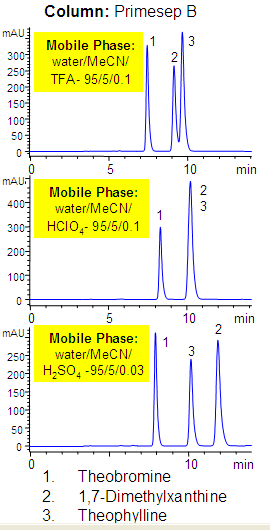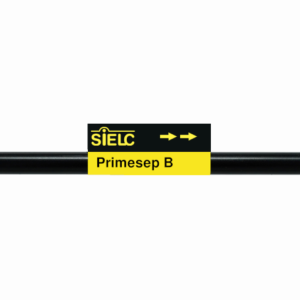
Primesep B separates xanthines such as theobromine, dimethylxanthine, theophylline by a combination of reversed-phase and ion-exchange mechanisms. The anion-exchange properties of the column allow retention of hydrophilic xanthines, and the reversed-phase properties retain hydrophobic compounds. The HPLC separation uses a mobile phase of water, acetonitrile (MeCN, ACN) and either trifluoroacetic acid (TFA), perchloric acid (HClO4), or sulfuric acid (H2SO4) and UV detection.
| Column | Primesep B |
| Mobile Phase | MeCN/H2O |
| Buffer | TFA , HClO4, H2SO4 |
| Flow Rate | 1.0 ml/min |
| Detection |
| Class of Compounds |
Drug, Acid, Hydrophilic, Ionizable, Hormone |
| Analyzing Compounds | Theobromine, 1,7 – Dimethylxanthine, Theophyline |
Application Column
Primesep B
The Primesep family of mixed-mode columns offers a wide variety of stationary phases, boasting unprecedented selectivity in the separation of a broad array of chemical compounds across multiple applications. Corresponding Primesep guard columns, available with all stationary phases, do not require holders. SIELC provides a method development service available to all customers. Inquire about our specially-tailored custom LC-phases for specific separations.
Select optionsTheobromine
Theophylline
Theophylline monohydrate





